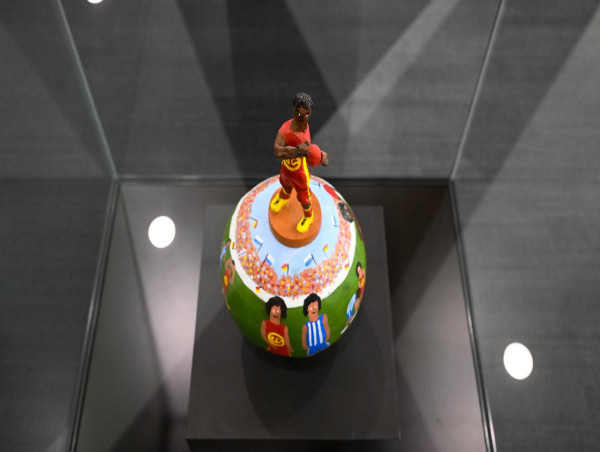From Cathy Freeman's gold medal runs to Ella brothers magic on the rugby paddock, the boxing brilliance of Lionel Rose and Nova Peris' time in politics, in almost every sporting field there are Aboriginal and Torres Strait Islander athletes at the top of their game.
And now, when visitors walk into the Australian Institute of Aboriginal and Torres Strait Islander Studies in Canberra they will see a new exhibition celebrating Indigenous excellence in sport.
The institute's chief executive Craig Ritchie, a Dhunghutti and Biripi man, said the Blak Excellence exhibition is drawn from the Aboriginal and Islander Sports Hall of Fame.
"We have lived and thrived on this continent for 65,000 years and there is a brilliance that is prevalent in our cultures and in our ways of looking at the world and ways of relating to one another that is so often overlooked," he said.
We live in an environment where Aboriginal and Torres Strait Islander people are more often discussed in the context of deficit and lack, Mr Ritchie said, and there is a strong focus on all of the ways they are disadvantaged.
"That easily becomes in the minds of many people the defining characteristic of what it means to be an Aboriginal and/or Torres Strait Islander person," he said.
"And in that context, it's really easy for people to lose sight of the fact that we are just an excellent group of people."
Blak Excellence showcases photos of extraordinary sportspeople, previously highlighted in the Aboriginal Studies Press publication Black Pearls, and also includes sports memorabilia, sporting-related items and original artworks from the institute's collection.
Speaking to AAP on the day after the 30-year anniversary of St Kilda AFL star Nicky Winmar lifting his guernsey and pointing at his black skin in response to racial abuse by Collingwood fans, Mr Ritchie said top Indigenous athletes are often thrust into the political arena.
"I don't think people set out to be symbols," he said.
"I think they set out to be really good at sport or really good at their job or really excel in their field and they become symbols, we invest in them with a whole kind of meaning."
That is because they speak to the possibilities, Mr Ritchie said.
"There's a powerful symbolic role that people who achieve in any field, and in the context of this exhibition, in sport, send a signal to the rest of the population about what's possible."
Mr Ritchie said the institute has an important job to do in shining the light on the "sheer brilliance" of Indigenous people now and in the past.
"Sport has often been one of the ways that our people have been able to escape the limitations on us, often imposed on us through the experience of colonisation," he said.
"And to be frank, we're bloody good at it."
The exhibition will run until June 30 at Maraga, Canberra, but will be closed on Wednesday, April 19, for the funeral of former AIATSIS principal Russell Taylor.






